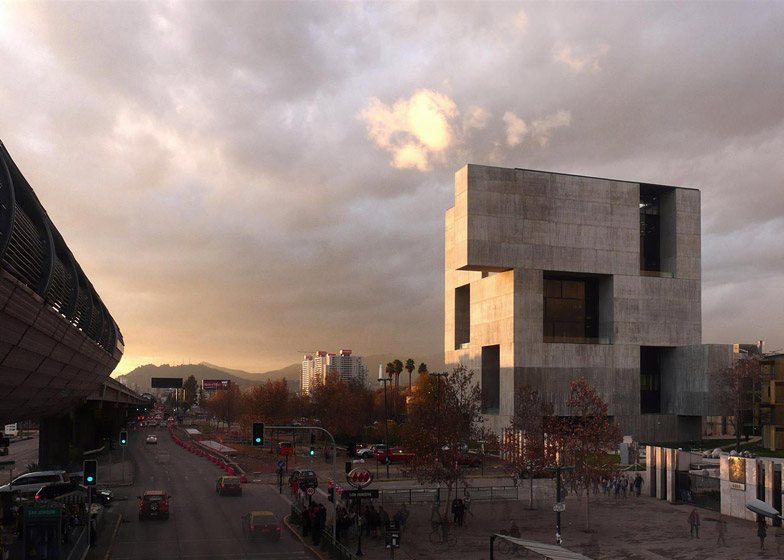Google's self-driving car, a proposal for clearing plastic waste from the world's oceans and a concrete university building in Santiago are among the category winners for this year's Designs of the Year awards.
London's Design Museum has revealed the six category winners for its annual awards programme, which honours projects in the fields of architecture, digital, fashion, graphics, product and transport.
The winners were chosen by a jury chaired by artist Anish Kapoor, along with architect Farshid Moussavi, fashion editor Hilary Alexander, ÉCAL director Alexis Georgacopoulos and Land Rover design director Richard Woolley.
Although Google's self-driving car has hit some speed bumps during its development, the prototype was named the winner of the transport category for its potential to alter mobility in the future.
"As a precursor to a real revolution in personal transport, the Google car brings together various autonomous technologies for the first time," Woolley said. "The potential for a product like this to change the way society thinks about the car, its use and ownership, is huge. Google have taken a very bold step entering and leading the debate, and this is to be roundly applauded."
A proposal for a 100-kilometre array of floating barriers by Boyan Slat, Jan de Sonneville and Erwin Zwart, which aims to clear the oceans of waste plastic, won in the digital category. The Ocean Cleanup concept is designed as a solution to remove the "islands" of plastic waste that accumulate where currents converge at sea and its development has been largely funded through online campaigns.
"This project is a digitally based idea to raise awareness of the terrible problem of plastic in the oceans," said Kapoor. "It takes a different view of design – that it can gather in forces via the internet and use a fairly straightforward process to deal with the problem itself."
In the architecture category, the accolade went to a concrete innovation centre with deep recessed windows at a Chilean university. Designed by Santiago studio Elemental, the building's large openings were created to cool its network of communal interior spaces.
"The UC Innovation Center is an excellent example of how the design of an office building can engage with its context," said Moussavi. "Its large openings carved away from its facades not only act as air corridors, light channels and pockets of collective spaces, but they also provide a different perception of such a building in the city: one that is permeable, visually, socially and climatically with its environment."
The fashion category was topped by London designer Thomas Tait's Autumn Winter 2013 collection. The Central Saint Martins graduate's range combined unusual cuts, bright colours and technical fabrics.
"Thomas Tait is one of the most original, young, London-based designers," said Alexander. "The Autumn Winter 2013 collection featured outstanding technical precision in terms of the panelling and innovative seaming."
Researchers Donald Ingber and Dan Dongeun Huh's Human Organs-on-Chips devices that provide an alternative drug-testing method were the judges' favourite in the product category. The tiny microchips are lined with human cells to mimic the complex tissue structures of human organs.
"With drug development costs running in to billions of pounds, this entry really caught the imagination of all the judges," said Woolley. "It's an intriguing and exciting prospect that has the potential to reduce animal testing, and at the same time speed up development of new drugs."
Finally, an advertising campaign promoting unusually shaped fruits and vegetables was the graphics category winner. The Inglorious Fruits & Vegetables posters and promotional material was designed by creative agency Marcel for French supermarket Intermarché, which offered 30 per cent off "ugly" produce to encourage customers.
"This is a very down to earth, straightforward way of saying 'enough with the food waste'," said Georgacopoulos. "It glorifies the differences, celebrating something which is organic, and does not always appear in the same shape, colour or weight."
These six projects beat 70 other nominees, which are all on display at the Design Museum as part of a dedicated exhibition until 23 August 2015.
An overall winner will be crowned Design of the Year during a ceremony later this summer.

